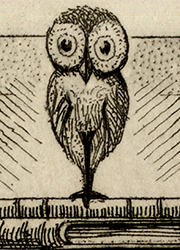
Bookplates, marks of ownership that have existed for centuries, acquired a new life outside the covers of books in their golden age. At this turn-of-the-twentieth-century moment, bookplates were prized for their aesthetic value, and it became an international phenomenon to collect, study, and exchange them. This accompanied improvements to printing technologies that made books and their bookplates more affordable for the aspiring and rising middle class. From his home on New Haven’s Whitney Avenue, William Fowler Hopson catered to a growing marketplace that sought out individualized, personal bookplates. Hopson’s process realizing his 201 bookplate commissions—preserved in correspondence, sketches, and corrected trial proofs—demonstrates his commitment to encapsulating his patrons’ identities.
This exhibition in the Sterling Memorial Library exhibits corridor, features Hopson’s artistic materials and personal papers, part of the Yale Bookplate Collection and Yale’s Manuscripts and Archives, to elucidate the process of inventing, negotiating, and printing bookplate designs in their golden age. Ultimately, Hopson’s clients commissioned bookplates with artistic representations that were emblematic of their familial, personal, and communal contributions. By tracing the claims made through these commissions, we gain unique insight into some of the social standards and aspirations at the turn of the twentieth century in America.
The exhibit is on view until October 6.